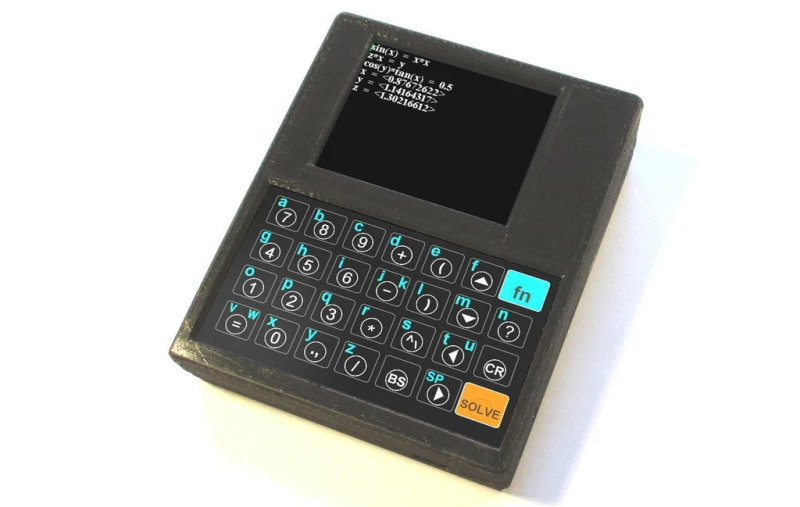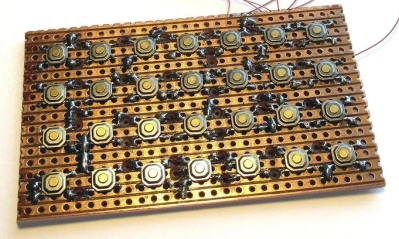
We’re suckers for good-looking old-school calculators, so this interesting numerical equation-solving calculator by [Peter Balch] caught our attention. Based around the ESP32-WROOM-32 module and an LCD, the build is quite straightforward from an electronics point of view, with the main work being on the software side of things.
A custom keyboard was constructed on Veroboard using a handful of tactile switches arranged in a charlieplexing array to minimize the number of IO pins consumed. For the display, an off-the-shelf 240×320 ILI9341-based module hooked up by SPI was used. A single lithium cell was used for the power supply, connected to a USB

charger module, but you could just as easily substitute a 3 x AA battery box. The case was designed in DesignSpark mechanical and 3D printed. It’s unclear what keyboard version they settled on; there are options for one with keycaps and one without. Regardless, a 3D-printed frame sits atop the keyboard circuit, with the graphics printed on photo paper and a protective coversheet on top.
The most interesting part of this project is the software and [Peter]’s extensive explanation of the pros and cons of the various numerical-solving algorithms. “Solve,” as they call the project, uses five methods to solve single-variable equations and Newton-Raphson for simultaneous equations. The exact method depends on the types of functions used in the equations and whether they are continuous.
Additionally, the calculator software supports looping constructs, allowing the generation of results tables and multivariable graph plotting. All in all, it could be a helpful desktop addition for someone needing a dedicated solver. Check out the project GitHub page for more details of the construction and software and to start building your own.
The subject of calculators is very personal, especially for engineers and scientists. Here’s our word on maybe the last physical scientific calculator. Of course, we’ve covered so many DIY calculator builds that we’ve lost count. Here’s a great example. Finally, who needs electronics when you can do it mechanically? Batteries not included.
No comments:
Post a Comment